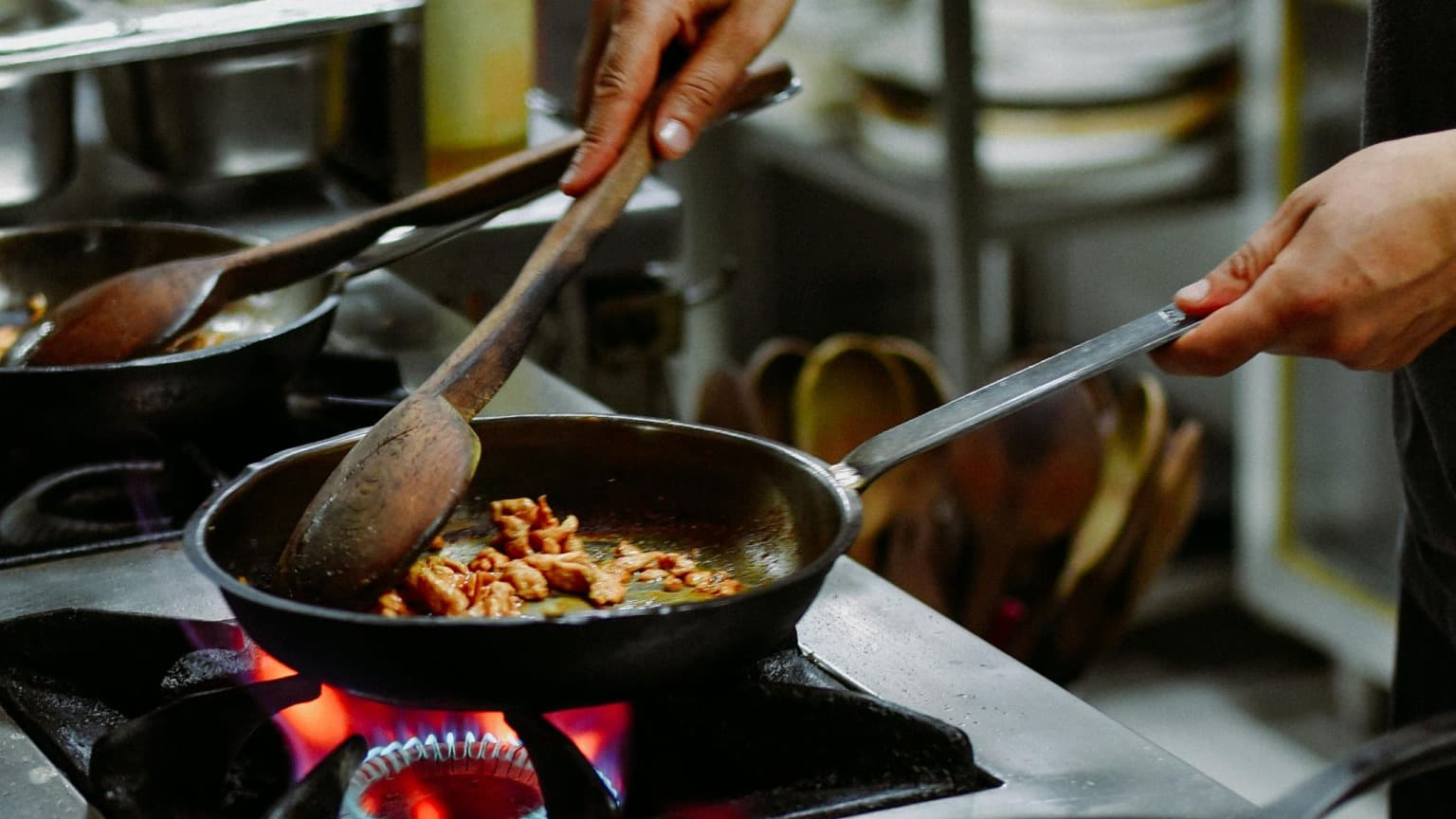Exploring Porto’s Culinary Heritage: From Tripe Stew to Sweet Delights
April 26, 2024
Porto’s gastronomy is widely known both nationally and internationally. Its cuisine is strongly influenced by the traditions and customs of northern Portugal and is full of traditional dishes from Minho to Trás-os-Montes. The food served here not only satisfies the body but also nourishes the soul. In this article, we’re going to explore some of the typical foods of the city of Porto, so that you can learn a little more about our culture through our gastronomy.

A frying pan with sizzling Rojões à Moda do Minho, a traditional Portuguese dish made with diced pork, floured tripe, chorizo, liver, and blood
Let’s start this journey through Porto’s gastronomy with one of the city’s most famous dishes, Tripas à Moda do Porto (Porto’s Tripe Stew). This recipe dates back to the Age of Discovery. At the request of Prince Henry, the Navigator (Infante D. Henrique), desperate to supply the ships on their way to Ceuta, asked the inhabitants of Porto to provide all kinds of food. Therefore, all the meat was cleaned, salted, and loaded onto the ships. The population was left with only the guts. Today, this dish is made with various types of meat, tripe, sausages, and white beans.
Next, we have the famous Sarrabulho porridge (Papas de Sarrabulho). This porridge is one of the traditional recipes of Portuguese cuisine and comes from the Minho region in the north of Portugal. Traditionally made in the winter when the pig is slaughtered, it’s made with chicken meat, pork, cumin, and either bread or corn flour. They are served as a soup or as a side dish to other main dishes such as Rojões à Moda do Minho.
Continuing with our exploration of traditional dishes, we have Rojões à Moda do Minho. This meat dish, typical of the Minho region, is one of the most traditional in Portuguese cuisine. It is made with different ingredients that give it a colorful and peculiar appearance, starting with diced pork, floured tripe, chorizo, liver, and blood. Another well-known dish is the famous alheira, a typical Portuguese sausage whose main ingredients are poultry meat, bread, olive oil, lard, garlic, and paprika. According to tradition, this dish was created by the New Christians who, in secret, continued to maintain the customs of their renegade Jewish religion to let society know that they were committed and well-integrated Christians.
To end this journey through our meat dishes, we have the long-awaited Francesinha. This is a typical dish from the city of Porto and consists of a sandwich with beef, sausage, fresh sausage, cheese, and sauce. The name is said to be related to its inspiration, the French croque monsieur, a sandwich similar to the Francesinha without the meat and sauce. The idea was to adapt this dish to the gastronomy of Porto, which loves hot food and strong flavors.
Another renowned dish is Bacalhau à Gomes de Sá, created by José Luís Gomes de Sá Júnior. The original recipe calls for the codfish to be cut into small chips, softened in milk for about an hour and a half to two hours and cooked with olive oil, garlic, and onion, accompanied by black olives, parsley, and boiled eggs.

A collage featuring four traditional Portuguese dishes: Rojões à Moda do Minho, a dish with diced pork, floured tripe, chorizo, liver, and blood; Tripas à Moda do Porto, a tripe stew with various meats and white beans; Papas de Sarrabulho, a porridge made with chicken meat, pork, cumin, and bread or corn flour; and Bacalhau à Gomes de Sá, a dish with codfish, olive oil, garlic, onion, black olives, parsley, and boiled eggs
In addition to the dishes mentioned above, there are other culinary delights found in every restaurant and household in the north of Portugal, such as the green broth (or Caldo Verde), from the Minho region, which was created by farmers who used ingredients that came from their land to make a broth. We also have codfish cakes (or Bolinhos de Bacalhau), whose origin is unknown, but which are believed to have been created in the Minho region, where the main ingredient is the famous codfish.
And to finish off this menu, why not some sweets? We have the famous Papos de Anjo, made with egg yolks and lots of sugar, which originate from the famous convent sweets. Other sweets that will delight anyone are Jesuítas. Although their origin is uncertain, it is through the city of Porto that these sweets made from puff pastry and sugar reach the whole country and the homes of all of us.